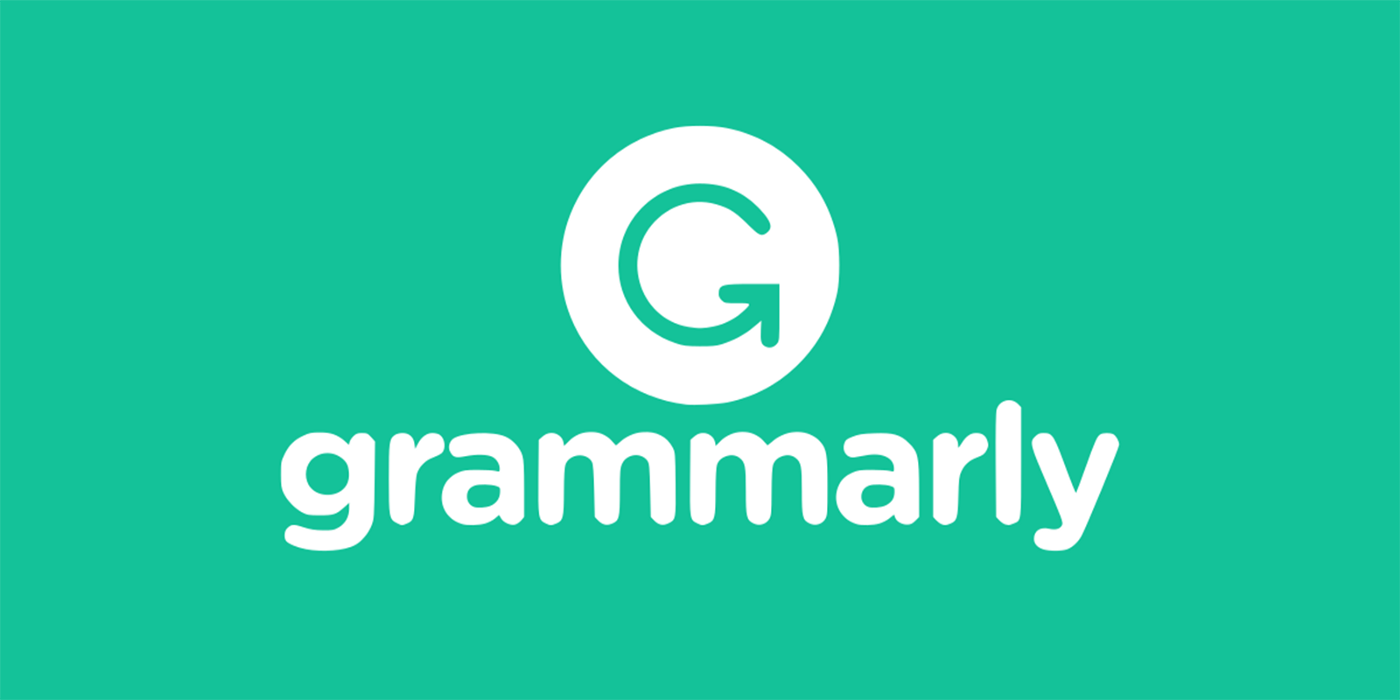If you do any kind of writing online, you’ve probably heard of Grammarly. With over 10 million daily active users, it’s the most popular spelling and grammar checker on the internet.
So what’s all the hype about? What does Grammarly actually do?
Here’s how it works:
Grammarly analyzes a piece of text you’ve written and checks for any errors. The free version covers the basics (grammar, punctuation, and spelling), while the premium version takes it a step further, offering stylistic and best-writing-practice suggestions.
It can be the difference between writing something clear and compelling versus writing something sloppy and unprofessional.
| Feature | What it does | The “extra” Grammarly touch |
|---|---|---|
| Grammar and Punctuation | It detects basic and advanced grammar and punctuation errors – alliteration, comma splices, run-on sentences, fragments, and much more. | If you’re not sure why a mistake is a mistake, no problem: Grammarly will tell you. It gives you a quick and easy-to-understand lesson. |
| Spell Check | It checks every word in your writing for spelling errors. | More comprehensive and robust than your average Microsoft Word spell checker, Grammarly’s spell check has first-class accuracy, perhaps the best available. |
| Plagiarism | It can scan your entire document for any cases of plagiarism, intentional or unintentional. | Not every case of plagiarism was done on purpose, which is why a tool like Grammarly is important to give your documents the full plagiarism rundown before you publish anything online. |
| Writing Style | It provides that “near human” touch by offering tips, suggestions, and advice on your writing style. | Perhaps the most underappreciated Grammarly feature. It gives you help with sentence-length, overall readability, and other actionable insights on improving your writing. If you want to become a better writer, this is exactly what you need. |
No matter what kind of writing you might be doing – professional writing, casual writing, hobby writing – Grammarly can help you spruce up your emails, social media posts, blogs, and formal papers.
In saying that, I think the following people can benefit the most from using Grammarly:
- Students
- Bloggers
- Content marketers and copywriters
- Business writers and professionals who want to draft an accurate report, presentation, or email.
Do you even need a grammar checker?

Hear me out: I’m not the type of guy who goes around correcting people’s writing (unsolicited, of course).
But as an editor, I know how important it is to write clearly and accurately. In this day and age of “chat speak”, emojis and short-form content, it can be easy to think of grammar as an old-fashioned convention. But the difference between great grammar and bad grammar is huge.
Here’s why:
- Your message is most important. In every type of writing, from blogs to a tweet, if your message isn’t clear, your readers will find it tough to understand the point you’re trying to make.
- Your writing represents you. Your writing gives the reader a taste of who you are — why risk coming across negatively due to grammar mistakes when this could be easily avoided?
- You have nothing to lose. Using a grammar checker only adds to the quality of your writing. It takes very little time, aids you and improves your writing, and will ensure you reach your audience with the right style and tone.
So, a powerful online grammar checker is a great way for writers to ensure that their work is clear and error-free. However, although Grammarly is very good, it’s not perfect.
In this Grammarly review, I’ll explain some of its pros and cons in more detail, as well as how to get the most out of using Grammarly.
The 3 reasons why I always recommend Grammarly
Let’s start with the pros, and why I always recommend Grammarly to my friends and family.
1. You don’t have to be a computer whiz
It might be 2019, but some people still twitch at the word “software” (there’s a reason why we’ve moved to the word “app”).
Most of us just don’t want to deal with anything extra, and would rather stick to what we already know instead of integrating something new into our routines.
I get it.
But Grammarly isn’t like most other software out there. As complex and advanced as Grammarly can be, it’s got an incredibly simple user interface and user experience. You could teach it to your grandparents and they’d be using it in an hour.
There are a few ways you can use Grammarly (which we explore more below), which include:
- The browser extension
- The Grammarly web tool
- The downloadable desktop app
- The Microsoft Word add-in
- The mobile app
This means that after just a few simple clicks, you can use Grammarly in whatever way you want: copying and pasting your text into the online tool or desktop app, or just having the Grammarly pop-ups and corrective lines naturally appear in your browser or Microsoft Word while you’re writing.
And trust me – I’ve briefly played around with other online Grammar checkers, such as ProWritingAid and Ginger, and Grammarly is the easiest to use.
As an editor, there’s nothing better than knowing I can recommend people to install an intuitive and easy tool that will make their life (and my life) easier.
2. Grammarly works
You’re reading my Grammarly review, so you probably want to know one thing above all else: does Grammarly work?
Yes, Grammarly absolutely works. It’s better at picking up spelling and grammar mistakes than any other checker.
At the end of the day, that’s its greatest selling point. Writing software has never been totally correct. Most software and apps will get most of the usual mistakes and errors, but anything more advanced and you’re on your own.
Grammarly has always gone the extra mile – no matter how advanced the mistake or suggestion, they’ve got you covered.
I wanted to understand why. What makes Grammarly different, and why is it more effective than other products I’ve tried?
Here are some interesting facts:
- Grammarly’s co-founders have been working on writing software since the late 90s, and they released their first software – Mydropbox – in 2002. In just 5 years, they had nearly a thousand universities signed up.
- They focused on creating a product that would benefit everyone. Both students and professionals with formal and academic writers, as well as casual, everyday writers with informal writing.
- They have an in-house team of deep learning engineers and computational linguists that are constantly at work tweaking their “good writing” algorithms by studying millions of pages from research databases.
The level of nuance that Grammarly can achieve is incredible, and perhaps my favorite part of using this tool.
(However, on a technical level, Grammarly is not perfect—as I explain further below. Some of its suggestions are wrong, which is why you need to pay attention and filter out the ones that are incorrect).
3. It teaches you everything you need to know
While all grammar checkers provide the obvious feature of highlighting your mistakes, Grammarly Premium goes the extra mile by actually teaching you why your mistakes are wrong.
For example, check out their explanation on sentence fragments:

This means that you not only ensure that your documents, emails, and posts are written with correct English grammar, but also that you will slowly and proactively improve your writing through Grammarly’s micro-lessons.
Here are just some of the common grammar and stylistic suggestions I’ve experienced with Grammarly:
- Best comma placement (avoid comma splices!)
- Word overuse
- Word redundancy (words like “really” and “actually” often add little to no meaning)
- Phrase and sentence structure
- Adverb overuse
- Ambiguous modifiers
- Confusion of lie/lay
- Incorrect or ambiguous pronouns
- Run-on sentences and wordiness
- Tautologies
- “Could of” instead of “could have”
If English is your second language or if you just want a nice daily lesson in grammar, there’s no better tool out there than Grammarly.
The 5 different ways to use Grammarly
You may be thinking: do I have to copy and paste everything I write into a text box for it to check my writing? Because that would be pretty annoying…
The answer is no. There are definitely more convenient ways to go about it.
Grammarly is an internet-based tool, so you need to be connected to the internet to use it.
However, there are various ways in which you can check your work, including:
1. The Grammarly web tool
The first option is to simply copy and paste your writing directly into the Grammarly web tool. To do this, click on ‘New’ in the dashboard and you will be presented with a blank page.

Copy your writing into the page and give the site a few seconds to work its magic. In just a few moments, the software reads, analyzes, and corrects your writing.
If you have a full and complete document, you can just upload it directly to the site. Simply click ‘Upload’ instead of ‘New’, choose a document from your computer, and Grammarly will analyze the content in the same way.
Alternatively, you can type directly into the Grammarly website, and the tool will check your writing as you go.
2. Desktop app
If you would prefer to check your writing via a desktop app, this is possible – as long as you use Windows or MacOS.
Simply download the app for your system by visiting the download page, follow the installation instructions and start using the tool in much the same way as the online version.
3. Microsoft Word
You can also use a Grammarly add-in directly within Microsoft Word. However, at the time of writing, this is only available if you are running Windows.
Visit the add-in page here and follow the instructions to add it to Word. Once up and running, the add-in will check your writing as you type.
This is how I generally use Grammarly. I found it seamless to install and it’s extremely intuitive to use. However, note that you do need to be connected to the internet while using it in Word.
4. Browser extension
One of the easiest ways to use Grammarly is via a browser extension.
There is a link on the homepage to this extension, or you can search for Grammarly in the Chrome Web Store.

Simply add the extension to Chrome as you would any other extension, and it will automatically check your writing when you use it on a number of websites.
This includes Gmail, providing you with assistance when you are typing an email, and even Google Docs for those of you who prefer Google’s word processor.
Here are a few of the other sites that you can use it on:

5. On your phone
Grammarly also has its own keyboard that you can use on your smartphone. This is available for both iOS and Android devices.
Once activated, the app will check your writing as you compose an email or text message. It is very useful if you want to catch those little mistakes that are so easy to make on phones, and it also has smart predictions to speed up your typing.
You can download the app at the Play Store or the App Store.
How much does Grammarly cost?
Is Grammarly free?
Yes, using Grammarly can be free.
One of the things I love about Grammarly is that you can use it without paying anything. The free version of Grammarly has no restrictions, meaning you can use it indefinitely without any limit or trial period.
And as I explain below, the free version of Grammarly is pretty good.
However, to unlock all of Grammarly’s features, you will need to upgrade to Grammarly Premium.
The current price for Grammarly Premium is:
- $12.00 a month when you pay annually ($144.00 in total)
- $20.00 a month when you pay quarterly
- $30.00 a month when you pay monthly.
(There is also a Grammarly Business option which costs $12.50 per user per month when billed annually. This provides you with everything included in Grammarly Premium with the addition of an admin panel, statistics for your team, etc.).
Now you know the Grammarly price, you’re probably wondering whether the free version is enough for you? Or should you upgrade to Grammarly Premium?
Read my verdict on this below, including my extensive review of Grammarly Premium.
Free version: What you get
Unlike some products – where the free version or free trial is a poor and hugely-limited version of itself – the free version of Grammarly is pretty great.
It provides you with the basics you need to lay down your writing foundation, with a comprehensive spelling, grammar, and punctuation checker, which is more powerful than the average spell check you get with most word processors.
When the tool finds potential mistakes, it underlines them in red. If you are using the web interface, you can then progress through each issue by clicking the sections on the right (Grammar, Punctuation, etc.). Or you can click on individual highlighted errors to find out more.
The free version will catch most of the basic mistakes in your writing as well as suggesting words that you may have meant to use. For example, it highlights spelling mistakes:

Punctuation mistakes:

It also allows you to choose your version of English depending on where your readers are based:

It will also highlight convention mistakes. For example, it will highlight ‘color’ if you are writing in Australian English.
You will also see how many issues Grammarly Premium has found in your writing. Crucially, these will not be visible to you in the free version, and you will have to upgrade to see them.
What are the immediate benefits of using Grammarly?
As soon as you start using Grammarly ,you’ll notice a difference in your writing. Here are the main benefits of the free checker:
- Can be used in “real-time”, highlighting mistakes as you write, or used at the end to run through the entire text to make sure no errors have been overlooked.
- Clear explanations on how sentences could be improved or restructured
- Checks spelling in American, British, Canadian, and Australian English.
- Easy to use on different devices and document types
These are the benefits of using the free Grammarly option.
What about the premium version? Is Grammarly Premium worth getting?
Grammarly Premium review
When it comes to online grammar checkers, you can’t get any better than Grammarly Premium.
Firstly, everything you get in the free version, you get in the premium version. And then you get everything else.
Grammarly Premium includes a far greater number of checks relating to grammar, punctuation, sentence structure and context. In addition to the checks in the free version, it will look out for:
- Writing inconsistencies
- Unclear structure
- Overuse of words
- Wordiness
- Inappropriate tone
- Insensitive language.
Check out the premium version of Grammarly here.
Here’s a great overview from Grammarly comparing the free versus the premium models:

Grammarly claims that its premium version goes beyond grammar to ensure that everything you write is clear and engaging.
Using Grammarly Premium certainly won’t guarantee your writing is clear and engaging. No grammar checker can turn rushed and sloppy writing into a masterpiece.
However, Grammarly Premium does have some really useful functions that I use on a daily basis. When I run Grammarly Premium over something I write, it always makes a few additional and helpful suggestions that I incorporate into my text. I find my writing is better for using the premium version.
It also provides detailed information about each of your grammar mistakes in the pop-up box – something you won’t get with the free version.
Customized feedback: My favorite feature
My favorite feature of Grammarly Premium though is the ability to personalize the type of suggestions and feedback I receive.
As a writer, feedback is always important. But it’s essential for any feedback to consider the reasons behind the writing, or why the text was written in the first place.
Grammarly seems to be making a conscious effort to turn their AI editor into something more human with these personalized goals.
Here’s how to make full use of this feature.
When you open a new document, you can adjust the settings so that you set writing goals based on:
- Intent (inform, describe, convince, tell a story)
- Audience (general or expert)
- Style (formal or informal)
- Emotion (mild or strong)
- Domain (academic, business or technical).
Adjusting these settings helps Grammarly decide which issues it’ll flag or ignore. Grammarly will also deliver some great insights based on these goals.
Let’s talk about some of these settings and why I think they are so important.
- Audience: Your audience is crucial when determining the delivery of your content. Using jargon and highly technical, industry-specific words can be incredibly useful when your audience are experts in the field. But it can be incredibly jarring when they’re the general audience.
- Formality: The difference between formal writing and informal writing can make or break your paper, assignment, proposal, or even email. You have to know when and when not to use certain phrases and language.
- Domain: The type of writing you’re doing: creative, business, casual, or academic?
- Tone: Do you want to come across as friendly? Confident? Analytical? This feature is great for setting how you want your writing to be received.
- Intent: With the choices of “inform”, “describe”, “convince”, and “tell a story”, you know that the software will try to understand why you’ve set up a narrative a certain way.
While their personalized feedback algorithms aren’t perfect, it’s intriguing to see that there’s a development towards turning a simple grammar check program into an all-around text analyst.
It’s the closest thing you can get towards having a real-life writing coach discussing the nuances of language as you go over your writing.
Is Grammarly Premium worth it?
For me, Grammarly Premium is worth it.
The free version is a useful tool, and better than not having a second set of eyes look over your writing. It will identify far more spelling and grammar mistakes than your typical free checker.
If you’re a writer on a budget, try installing Grammarly and test it for yourself.
However, as with most things in life, things that cost money are better than their free alternatives.
Grammarly Premium will identify more spelling and grammar issues in your document. You’ll also receive tips to improve your writing style and feedback/context behind your mistakes.
I personally pay for the premium version because I appreciate the extra features.
When it comes to writing a blog about editing, proofreading and writing, it’s important that typos and small errors never creep into my work.
In short: If you take your writing seriously, Grammarly Premium is definitely worth the extra expense.
How can it be improved?
I can confidently recommend Grammarly, but that doesn’t mean it doesn’t have its drawbacks. This is what I think could be improved:
- The premium price is high for occasional writers. If you’re a casual writer who only needs to use Grammarly from time to time but you still want the full benefits of premium, the $30.00 a month might be a bit steep. With that being said, the free version of Grammarly still does a good job, but you may miss out on improving the structure of the text and tone, etc., depending on the type of writing you do.
- A free trial to explore premium. That leads me on to this next point, that a free trial for premium users could be a great way to introduce the extra tools and allow users to see the difference it makes to their work. Currently, this isn’t offered by Grammarly. I can see how casual writers might not want to invest monthly or yearly without testing the features for themselves first.
- It’s only available in English. If you write in another language, Grammarly isn’t the tool for you. Compared to some of the competitors, it’d be nice to see this introduced in the future.
- Accuracy. Grammarly does a great job at picking up errors or typos in the text, but it doesn’t replace the human eye in terms of accuracy (and maybe a grammar checker never will). Therefore, I always manually review the suggestions offered by Grammarly (more about that below).
How Grammarly compares to a human editor

This is the part of my Grammarly review I was most excited to write about!
I’m a professional editor of books and journal articles destined for high-level English language journals. I know how important clear, accurate and error-free writing is.
Although Grammarly is effective at catching certain mistakes, it is not a human editor. As an editor, it’s clear to me that machines still have a long way to go before they can match humans.
For a start, some mistakes will slip through on Grammarly, even mistakes that seem quite basic. Some mistakes are simply harder for machines to spot.
For example, you may use a word that is spelled correctly but is not the right word in the context of the paragraph. Or you may mention that someone has blonde hair in one paragraph and brown hair in the next.
Grammarly would not pick up on these mistakes, but a good human editor would.
When it comes to more advanced issues like paragraph length, the tone of voice and the meaning of phrases and sentences, a human is absolutely necessary.
English is a tricky language to write well in, and it’s even trickier to proofread.
English has flexible grammar rules and the elements to good writing and storytelling are highly contextual. Human eyes will always be superior to the rigidity of automatic tools.
As a result, while Grammarly is a very useful tool for casual writing, it is not suitable for more formal writing. If you are writing a dissertation, an important business document or a manuscript, professional editing is important.







